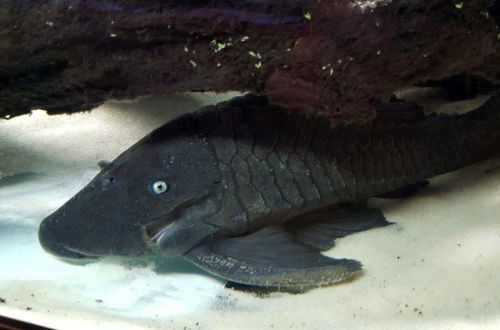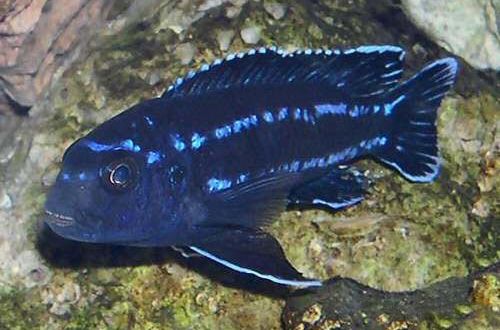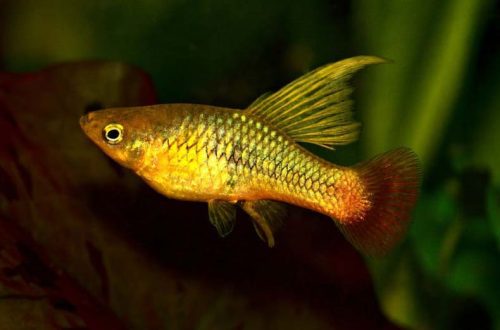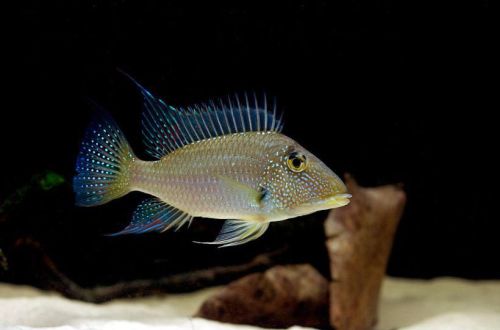
Satanoperka leukostikos
Satanoperca leucosticta, scientific name Satanoperca leucosticta, belongs to the Cichlidae family. The name comes from the ancient Greek words Σατάν (Satan), meaning “devil” and πέρκη (pérkē), “perch”. Such a formidable name does not correspond to the nature of these fish, they are quite peaceful and get along well with other species. The other part of the name also consists of two Greek words λευκός (leukós) meaning “white” and στικτóς (stiktos) “spotted”. Presumably it is associated with a body pattern of light specks.

Contents
Habitat
It originates from South America from eastern Venezuela to the northern regions of Brazil, including the territories of Guyana, Suriname and French Guinea. Inhabits the basins of such rivers as Essequibo, Demerara, Nickerie. The fish live in small tributaries and floodplain lakes with sand substrates littered with fallen leaves and numerous snags.
Brief information:
- The volume of the aquarium – from 600 liters.
- Temperature – 20-28°C
- Value pH — 5.5–7.0
- Water hardness – 2–12 dGH
- Substrate type – sandy
- Lighting – subdued
- Brackish water – no
- Water movement is weak
- The size of the fish is 13–15 cm.
- Food – any sinking food
- Temperament – peaceful
- Content in a group of at least 5–8 individuals
Description
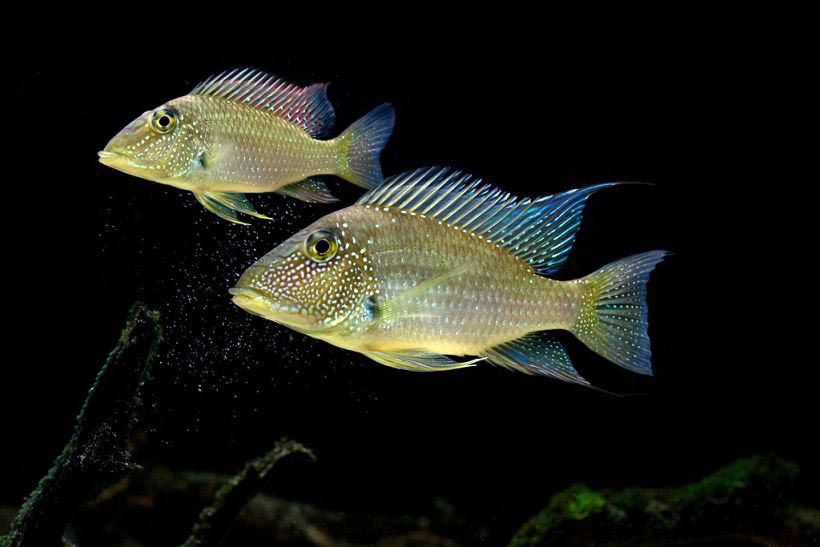
Adult individuals reach a length of 13–15 cm. Sexual dimorphism is weakly expressed, males are somewhat larger than females. This is where the visible differences end. The coloration is gray with numerous white speckles all over the body, which continue on the translucent fins.
Food
An omnivorous species that eats anything it can find. They feed at the bottom, sifting portions of sand with their mouths in search of food particles. The daily diet may consist of dry flakes, granules in combination with frozen daphnia, brine shrimp, bloodworm pieces. Pieces of food should be small. Feed 3-4 times a day in small portions.
Maintenance and care, arrangement of the aquarium
The optimal size of the aquarium for a group of 5-8 fish starts from 600 liters. The design is arbitrary and is selected at the discretion of the aquarist. The only important element of the decor is the ground. Due to the feeding habits of this species of cichlids, it is recommended to use a sandy substrate.
Although the fish is not picky about its surroundings, it will nevertheless look better in an environment that resembles its natural habitat, namely among snags in low light.
Experienced aquarists use the leaves of some trees to recreate the conditions characteristic of natural reservoirs. As the leaves decompose, they release tannins into the water, giving the necessary chemical composition and at the same time coloring it brown.
Water quality is of paramount importance. Satanoperka leukostikos is extremely sensitive to the accumulation of products of the nitrogen cycle (ammonia, nitrites, nitrates) and fluctuations in hydrochemical values, therefore it should never be introduced into a biologically immature aquarium.
Successful long-term keeping depends on maintaining stable water conditions. The best way to achieve the desired goal, in addition to installing the necessary equipment, is to regularly maintain the aquarium. The list of procedures is standard and consists of a weekly replacement of part of the water (about 50% of the volume) with fresh water, timely removal of organic waste (feed residues, excrement), equipment maintenance, etc.
Behavior and Compatibility
Peaceful sociable fish, compatible with other non-aggressive species of comparable size. They are also considered safe for fairly small aquarium neighbors. Intraspecific relationships are built on a hierarchy between stronger and weaker individuals. It is necessary to maintain in a group of 5-8 individuals; with a smaller number, alpha males may pursue weak relatives.
Breeding / breeding
Cases of breeding in aquariums are not uncommon if the fish are kept in suitable conditions and receive a balanced diet. Courtship is initiated by the male, occupying a site on the bottom and actively attracting females. Spawning occurs on some flat, even surface, such as a stone. When the eggs are laid, the masonry is covered with a thin layer of soil. The female stays nearby, waiting for the fry to appear, while the male “patrols” the surrounding area, protecting it from potential danger. If the aquarium is not large enough, then other fish may be attacked. The incubation period lasts 36-48 hours. The female takes the emerging juveniles into her mouth, where the fry spend another 7–8 days. Usually, the male at this time loses interest in the female and offspring and can initiate new courtship.
Fish diseases
The main cause of diseases lies in the conditions of detention, if they go beyond the permissible range, then immunity suppression inevitably occurs and the fish becomes susceptible to various infections that are inevitably present in the environment. If the first suspicions arise that the fish is sick, the first step is to check the water parameters and the presence of dangerous concentrations of nitrogen cycle products. Restoration of normal/suitable conditions often promotes healing. However, in some cases, medical treatment is indispensable. Read more about symptoms and treatments in the Aquarium Fish Diseases section.



